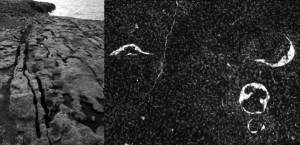Geraldine Finn reminds us that we’re “always both more and less than the categories that name and divide us”. None-the-less we need categories to help us think. Deep mapping has been a valuable conceptual tool for me in this respect, albeit one I recently felt had been miss-used or blunted to the point of becoming almost meaningless. That, and more personal difficulties, prompted me to feel I should let go of it as a term. (I’ve noted the reasons in earlier blogs, so won’t go over my reasoning again here).
But I have now been movingly reminded that ‘deep mapping’ is, for me, rather more than just a useful (if slippery) concept. It’s also a shared praxis with a particular, albeit bifurcated and contested, history. At root the term names a shared and ongoing narrative, a story that many people have and are collectively making. One in which I’m still very much caught up. My friend and colleague Dr. Nessa Cronin, who works in the Centre for Irish Studies at NUI, Galway, has just reminded me of all this in the best possible way.
Last year Nessa and I had shared thoughts about deep mapping when I was working at NUI, Galway, and we continued to do so by email after I’d left. She has recently completed work on a book chapter: ‘The Fineness of Things’: The Deep Mapping Projects of Tim Robinson’s Art and Writing, 1969 – 1972, and kindly sent me a draft to read. Given our exchanges I was curious to see what she’d written and was delighted by what I read. (The chapter will be published later this year by Manchester University Press in a book called: Unfolding the Landscape: Tim Robinson, Culture, and Environment, edited by Christine Cusick and Derek Gladwin. I’ll return to it again briefly later).
However what I want to focus on here is not the virtues of that illuminating chapter about an exceptional man’s work, but rather my renewed sense of the whole mesh of exchanges that occasioned it and will now flow from it. Not simply for its own sake, but for what it reminds me about the real basis of shared scholarship and praxis. That mesh of exchanges includes those between Nessa, Tim Robinson himself, and his partner Mairéad; those between Nessa, myself and a host of other scholars and artists; but also, and critically, those between groups in communities in the west of Ireland, through Know your Place: A Community Mapping Workshop, run in conjunction with Lifeworlds: Space, Place and Irish Culture International Conference, Galway City Museum, 29th March 2014. This event, focused on devising a community-based mapping ‘toolkit’, centered on the mapping work and experience of the X-PO Mapping Group in Kilnaboy, County Clare, Mná Fiontracha Mapping Community Group in Árainn, and The Sliabh Aughty Community Group, with wider virtual communities, and with the workshop facilitators Dr. Ailbhe Murphy, Dr. Deirdre O’Mahony and Ms. Ann Lyons. All those exchanges will no doubt continue to contribute to this conversational weave, one in which deep mapping will be one, more or less useful, strand.
It’s in this rich and particular context that Nessa wrote to me that she always tries to be mindful of the processes of thinking, reading, and writing as in many ways collaborative work. As she points out, this is the case even if the engagement is with thinkers long since died, yet still active in our thoughts and imaginings. Thinkers with whom we have imaginary conversations and debates around the key issues they thought and wrote about, just as we might with living thinkers. It is, she rightly insists, though all such conversations that our arguments “are tried, tested and forged over time”. Forged and, when they are chipped and blunted by careless or ignorant use, necessarily re-forged so as to help us to continue in our shared work. That’s one aspect of a community of scholar/teacher/practitioners – however on occasion fractious and divided – that helps to keep the purpose and value of listening and learning alive, despite all the dogmatic managerialism that is currently choking the vitality of our schools and universities.
Cliff McLucas believed that deep mapping should be a conversation, and I now realize that it’s vitally important to hang onto that belief and, with it, to Nessa’s sense of the shared and ongoing nature of our conversational work. Questions of conceptual definition or miss-appropriation then become relatively minor and certainly secondary. At a difficult time in my life – not least because I’m about to turn sixty-five – I needed to be reminded that deep mapping is like a charged mycelial mesh, it’s energy flows where there are higher levels of conductivity to carry it’s charge, it jumps apparently impassible synapses and, of course, occasionally some of its energy will simply run to earth. That is not, however, a reason for not keeping faith with those conversations of which each of us is a strand.
